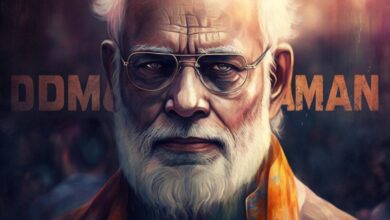The Genesis: From Predicting Avalanches to Revolutionizing Medical AI

In a world increasingly shaped by artificial intelligence, it’s not just about building smarter machines; it’s about building a smarter future for humanity. From automating tedious tasks to powering groundbreaking scientific discoveries, AI is rewriting the rules across countless industries. But perhaps nowhere is its potential more profound, or its challenges more complex, than in healthcare.
Today, we’re diving into the heart of this transformative field with Val Garnaga, the Lead for Suki AI’s ML Platform and a Staff ML Engineer. Working in the bustling innovation hub of the Bay Area, Val is at the forefront of advancing medical intelligence. His journey isn’t just a testament to technological prowess; it’s a fascinating narrative of blending classical statistical rigor with cutting-edge adaptive AI systems, including a daring venture into the quantum realm. Join us as we explore how Val and his team at Suki are pushing the boundaries to assist clinicians and improve patient care.
The Genesis: From Predicting Avalanches to Revolutionizing Medical AI
Val Garnaga’s path into AI is as unique as it is insightful, beginning not with silicon valleys, but with snow-capped peaks. His journey into this fascinating domain commenced during his PhD research back in 2000. Here, he developed a hybrid statistical and neural network forecasting model designed to predict snow avalanches – a task demanding both precision and adaptability.
This early work combined classical statistical ARIMA models with recurrent neural networks, autonomously selecting and optimizing parameters. It was more than just a complex project; it was a foundational experience that introduced new methods in partially supervised neural network training and categorical parameter encoding. This blend of mathematical modeling with adaptive learning systems would set the stage for his long-term fascination with AI.
Fast forward to today, and that foundational interest has blossomed into a leadership role at Suki AI. As the lead for the Machine Learning Platform, Val focuses on large-scale medical AI systems. Here, deep learning and natural language understanding are not mere buzzwords but essential tools, diligently applied to assist clinicians, streamline workflows, and ultimately, enhance patient outcomes. It’s a powerful transition from predicting natural phenomena to understanding and assisting human health.
A Leap into the Quantum Realm for Deeper Insights
But Val’s exploration doesn’t stop at traditional deep learning. He’s also venturing into the nascent but incredibly promising field of Quantum Neural Networks (QNNs). Imagine using quantum circuits to detect subtle biomedical patterns that classical computers might miss. This isn’t science fiction; it’s current research.
In one of his recent projects, Val implemented a quantum-classical hybrid model aimed at identifying early-stage Parkinson’s disease from voice data. The results were astounding: a 99% diagnostic accuracy, outperforming classical models like Random Forests and standard neural networks. This work isn’t just an incremental improvement; it marks a significant step toward integrating computation, biology, and quantum theory to truly push the boundaries of medical AI, offering a glimpse into a future where diagnostics are more precise and earlier than ever before.
Navigating the Bay Area’s AI Frontier: Challenges and Solutions
Building with AI in the Bay Area, especially in healthcare, is a high-stakes game. The challenges are numerous, intricate, and constantly evolving. As Val explains, the primary hurdles include meticulously balancing scalability, cost-effectiveness, and precision, all while rigorously ensuring AI systems remain secure, compliant, and, crucially, interpretable. Healthcare AI adds an extra layer of complexity, demanding unwavering reliability under the highly variable conditions of the real world.
One significant technical shift involved transitioning from traditional GPU-based systems to specialized ASIC-based AI accelerators, such as TPUs. This wasn’t just a hardware upgrade; it necessitated a complete rethinking of training orchestration and large-scale optimization strategies. It’s the kind of challenge that pushes engineers to innovate beyond conventional methods.
To tackle these demanding problems, Val has spearheaded the design of modular and fault-tolerant pipelines. These aren’t static systems; they’re dynamic, automatically monitoring data quality, retraining models as necessary, and continuously optimizing execution. This proactive, adaptive approach is critical for maintaining high performance and compliance in a rapidly changing environment.
In parallel, his research continues to explore quantum-inspired hybrid architectures. These are deployed in domains where classical learning models hit a plateau, struggling with the sheer complexity of biological and linguistic data. By leveraging the expressive power and inherent robustness of quantum layers, Val aims to unlock new insights and solve problems that were previously out of reach.
The Ecosystem’s Pulse: Fueling Innovation
The Bay Area’s AI ecosystem itself is a force multiplier. What makes it truly unique, Val observes, is the incredible speed at which ideas transform from academic research papers into tangible prototypes and thriving startups. It’s a vibrant melting pot where scientists, engineers, and entrepreneurs converge, constantly pushing boundaries and generously sharing research across both academia and industry.
The region’s educational foundations, anchored by world-renowned institutions like Stanford and Berkeley, ensure a relentless flow of fresh talent and groundbreaking innovation. Beyond formal education, community programs, such as Google’s AI design partner initiatives and OpenAI research collaborations, actively foster practical experimentation and collaborative problem-solving. This creates an environment where learning and application go hand-in-hand.
From an investment perspective, there’s a growing focus on efficiency and specialization. Investors are keenly funding solutions tailored to specific needs, such as domain-tuned healthcare LLMs and cost-optimized inference systems. This highly collaborative and competitive environment not only continuously challenges Val’s own work but also inspires him to translate cutting-edge research into production-grade healthcare AI systems that make a real difference.
The Developer’s Toolkit: Blending the Classic with the Quantum
In the realm of AI development, having the right tools is paramount. Val’s core ecosystem for building robust ML platforms includes industry staples like TensorFlow and PyTorch, complemented by Google Vertex AI for seamless orchestration. These frameworks are paired with AI/ML accelerators of various architectures, ensuring maximum performance and flexibility for diverse tasks.
For specialized speech and language tasks, which are critical in medical AI, he leverages the power of OpenAI Whisper and Google Gemini. These tools are instrumental in building scalable, multimodal pipelines capable of processing and understanding complex clinical language. This approach allows for rapid experimentation while maintaining the integrity of reproducible and production-grade ML pipelines—a crucial balance in healthcare applications.
Beyond Classical: Embracing Quantum-Enhanced Architectures
But Val’s toolkit isn’t limited to the well-trodden paths of classical machine learning. He is deeply immersed in exploring quantum-enhanced architectures, specifically designed to tackle problems demanding higher-order representations, such as intricate biomedical pattern detection. This involves integrating hybrid models that smartly combine classical neural controllers with quantum circuits.
How does this work? The controller network intelligently learns to prepare data for optimal quantum encoding. Then, the quantum layer steps in, extracting high-dimensional, entangled relationships that classical models often miss. This synergy allows these hybrid systems to extend the expressive power of deep learning, integrating quantum principles that significantly improve generalization and sensitivity to the subtle patterns hidden within complex data. It’s a powerful testament to the idea that sometimes, the future lies in combining the best of different worlds.
Glimpsing the Horizon: AI’s Future and Sage Advice
Looking ahead, Val is most excited about the future of AI lying in what he calls “cross-domain fusion,” where quantum computation, symbolic reasoning, and generative intelligence will converge. He holds a particular enthusiasm for quantum-enhanced learning, an area he actively explores through hybrid quantum neural networks. These advanced systems show incredible promise in managing uncertainty, noise, and complex correlations inherent in biomedical data. Imagine new diagnostic tools, highly adaptive assistants, and models that can reason with both physical and informational constraints – this is the future Val envisions.
For developers just embarking on their AI journey, Val offers invaluable advice drawn from his extensive experience leading large-scale ML platforms. His primary recommendation is to start by mastering the fundamentals of mathematics, statistics, and data structures. Building this strong foundational intuition, he emphasizes, is far more crucial before diving into high-level frameworks.
He urges aspiring AI professionals to focus on understanding the core mechanisms: how models truly learn, how data quality profoundly shapes outcomes, and why reproducibility is absolutely critical for building trust in AI systems. The strongest AI professionals, in his view, are those who successfully combine analytical rigor with boundless creativity, always ready to adapt and evolve as technology inevitably progresses. It’s a continuous learning journey, and curiosity remains your most powerful tool.
Val Garnaga’s work at Suki AI, and his explorations into quantum-enhanced learning, paint a compelling picture of AI’s frontier. It’s a future where AI isn’t just about automation, but about augmenting human intelligence, particularly in critical fields like medicine. His journey reminds us that true innovation comes from a blend of foundational understanding, relentless problem-solving, and the courage to explore uncharted territories. The impact on medical intelligence, and indeed on humanity, promises to be nothing short of revolutionary.





